Opinion & Analysis
Wishon: What lofts should your clubs be?
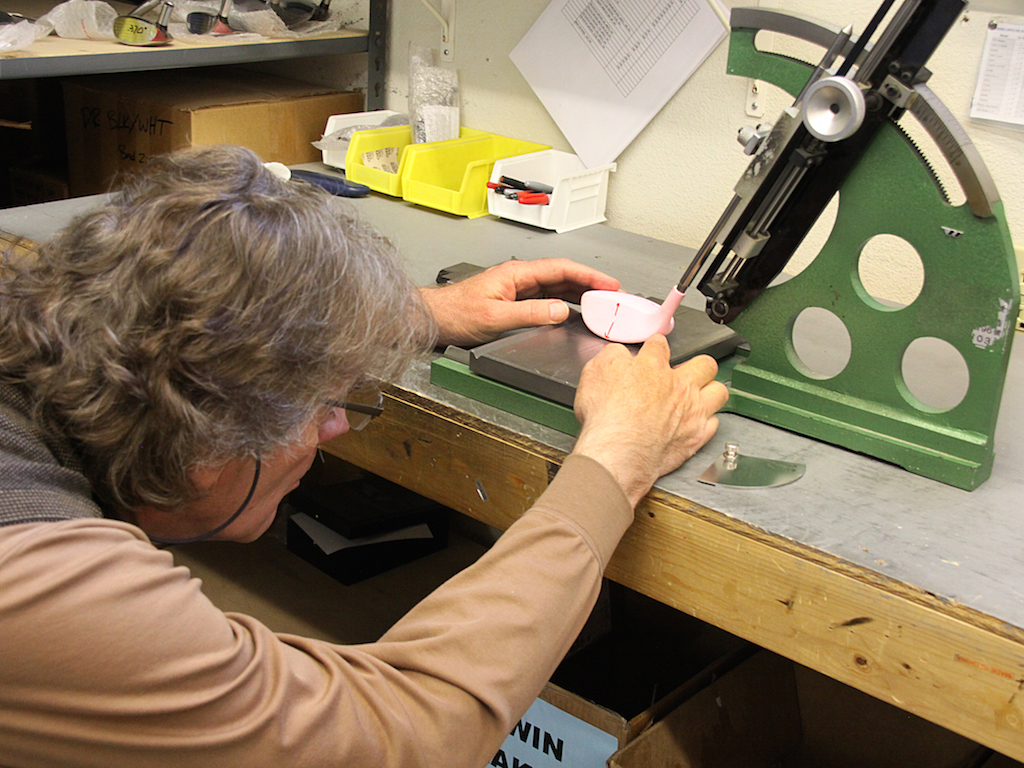
Proper loft fitting involves more than just the loft of the driver. Since loft is the main factor of shot distance, trajectory and backspin for each club in the bag, the clubfitter has to consider several factors for each golfer when making the recommendation for the best lofts for each club.
Factors for determining loft
Key to this is the right set makeup for each golfer. As such the most important golfer inputs that are used to help determine the best initial lofts prior to hit testing are shown above.
The following is an overview of the key points in loft determination for the driver, woods, hybrids and irons.
[quote_box_center]The higher the clubhead speed and the more upward the angle of attack, the lower the driver loft should be for optimal tee shot performance.
The lower the clubhead speed and the more downward the angle of attack, the higher the driver loft should be for optimal tee shot performance.[/quote_box_center]
Launch angle is the No. 1 most important launch monitor parameter to observe and react to in determining the golfer’s best driver loft. Spin outputs come a distant second behind visual observation of the ball flight and the golfer’s clubhead speed. The higher the clubhead speed, the more possibility there may be for a spin issue to be considered in the fitting of the loft. But never should the spin output of the launch monitor trump the importance of the observation of the ball flight shape.
Too many golfers focus too much on the backspin measurement for the driver on a launch monitor – ball flight shape tells you more about driver backspin fitting than a launch monitor.
Learn what a driver shot hit with too much backspin looks like. Achieving the best launch angle and ball flight shape is more important than achieving the best backspin measurement.
Loft is the No. 1 way to change backspin and launch angle. The shaft will change spin and launch angle for golfers with later-to-releases, but only SLIGHTLY. The only way the shaft can reduce backspin for a golfer with an actual high spin problem is if the new shaft is stiffer overall and or stiffer in the tip section than the golfer’s current shaft. It is NEVER wise to increase stiffness in a shaft beyond what is the golfer’s proper flex and bend profile as the way to try to reduce the spin.
When the golfer does actually have a problem of too much backspin with the driver — one that is verified with a visual analysis of the ball flight shape — 98 percent of the time it is a problem that has to be resolved by a swing change and not from an equipment change.
Knowing the lowest fairway wood loft and lowest iron loft that the golfer can hit consistently well up in the air to achieve proper carry distance is the key for choosing:
- The golfer’s first fairway wood after the driver.
- The number of hybrids or high-lofted fairway woods a golfer needs.
- The first iron in a golfer’s set.
This is why proper loft fitting also involves deciding what the golfer’s best set makeup will be at the same time.
If you doubt the golfer’s own evaluation of the lowest loft wood and iron they hit consistently well, always recommend more loft for the first fairway wood after the driver and one more hybrid or high-lofted fairway wood before starting the iron set makeup.
The current lofts of the golfer’s irons play a role in iron loft fitting because no golfer wants a new set of irons that he hits shorter in distance per each number. There is nothing wrong with very low lofts in an iron set as long as the correct judgment is made for the golfer’s set makeup recommendation. For example, the stronger the lofts in the irons, the more hybrids or high-lofted woods there would be and the higher the number of the first iron.
Much lower-lofted iron sets may require a change in the set makeup such that the golfer’s first iron may need to be a 6 iron or even a 7 iron. Never fit a golfer with a loft that he/she cannot hit well up in the air to fly with reasonable consistency.
Loft gaps between clubs should be greater as the golfer’s clubhead speed is slower
- 4-degree gaps: 5 iron swing speed of 80 mph or more
- 5-degree gaps: 5 iron swing speed of 65-to-75 mph
- 6-degree gaps: 5 iron swing speed under 65 mph
Nine times out of 10, when a golfer hits the ball VERY high the reason is a swing error in which the golfer is releasing the club in a way that allows the clubhead to pass the hands before impact and thus adds dynamic loft to the clubhead to result in the very high flight. In such cases, lower loft(s) will only help a little. The remedy to bring the ball down to a reasonable height will almost always be lessons to correct the impact position error.
Clubhead center of gravity (CG) can help more with loft fitting to achieve a little bit better trajectory for proper carry distance in the fairway woods first, hybrids second and irons last. But the effect of CG on shot height is ALWAYS proportional to the golfer’s club head speed and angle of attack.
[quote_box_center]The higher the clubhead speed, the more the CG can visibly affect the trajectory of a given loft angle and vice versa.
The more downward the angle of attack, the less the CG can visibly assist the trajectory from a given loft angle.[/quote_box_center]
In other words, the slower the clubhead speed and more downward the angle of attack, the less the CG has any effect on shot height and the more that loft becomes the only factor to improve shot height and with it, proper carry distance for optimizing distance.
Related
- What length should your clubs be?
- What lofts should your clubs be?
- Face angle is crucial for a proper fitting
- The best way to fit lie angle
- How to choose the right club head design
- Tom Wishon’s keys to set makeup
- Getting the right size grip, time after time
- What shaft weight should you play?
- What swing weight should your clubs be?
- What shaft flex should I use?
This story is part of a 10-part series from Tom Wishon on professional club fitting.
- LIKE64
- LEGIT274
- WOW77
- LOL11
- IDHT11
- FLOP23
- OB8
- SHANK16
19th Hole
Vincenzi’s 2024 Zurich Classic of New Orleans betting preview

The PGA TOUR heads to New Orleans to play the 2023 Zurich Classic of New Orleans. In a welcome change from the usual stroke play, the Zurich Classic is a team event. On Thursday and Saturday, the teams play best ball, and on Friday and Sunday the teams play alternate shot.
TPC Louisiana is a par 72 that measures 7,425 yards. The course features some short par 4s and plenty of water and bunkers, which makes for a lot of exciting risk/reward scenarios for competitors. Pete Dye designed the course in 2004 specifically for the Zurich Classic, although the event didn’t make its debut until 2007 because of Hurricane Katrina.
Coming off of the Masters and a signature event in consecutive weeks, the field this week is a step down, and understandably so. Many of the world’s top players will be using this time to rest after a busy stretch.
However, there are some interesting teams this season with some stars making surprise appearances in the team event. Some notable teams include Patrick Cantlay and Xander Schauffele, Rory McIlroy and Shane Lowry, Collin Morikawa and Kurt Kitayama, Will Zalatoris and Sahith Theegala as well as a few Canadian teams, Nick Taylor and Adam Hadwin and Taylor Pendrith and Corey Conners.
Past Winners at TPC Louisiana
- 2023: Riley/Hardy (-30)
- 2022: Cantlay/Schauffele (-29)
- 2021: Leishman/Smith (-20)
- 2019: Palmer/Rahm (-26)
- 2018: Horschel/Piercy (-22)
- 2017: Blixt/Smith (-27)
2024 Zurich Classic of New Orleans Picks
Tom Hoge/Maverick McNealy +2500 (DraftKings)
Tom Hoge is coming off of a solid T18 finish at the RBC Heritage and finished T13 at last year’s Zurich Classic alongside Harris English.
This season, Hoge is having one of his best years on Tour in terms of Strokes Gained: Approach. In his last 24 rounds, the only player to top him on the category is Scottie Scheffler. Hoge has been solid on Pete Dye designs, ranking 28th in the field over his past 36 rounds.
McNealy is also having a solid season. He’s finished T6 at the Waste Management Phoenix Open and T9 at the PLAYERS Championship. He recently started working with world renowned swing coach, Butch Harmon, and its seemingly paid dividends in 2024.
Keith Mitchell/Joel Dahmen +4000 (DraftKings)
Keith Mitchell is having a fantastic season, finishing in the top-20 of five of his past seven starts on Tour. Most recently, Mitchell finished T14 at the Valero Texas Open and gained a whopping 6.0 strokes off the tee. He finished 6th at last year’s Zurich Classic.
Joel Dahmen is having a resurgent year and has been dialed in with his irons. He also has a T11 finish at the PLAYERS Championship at TPC Sawgrass which is another Pete Dye track. With Mitchell’s length and Dahmen’s ability to put it close with his short irons, the Mitchell/Dahmen combination will be dangerous this week.
Taylor Moore/Matt NeSmith +6500 (DraftKings)
Taylor Moore has quickly developed into one of the more consistent players on Tour. He’s finished in the top-20 in three of his past four starts, including a very impressive showing at The Masters, finishing T20. He’s also finished T4 at this event in consecutive seasons alongside Matt NeSmith.
NeSmith isn’t having a great 2024, but has seemed to elevate his game in this format. He finished T26 at Pete Dye’s TPC Sawgrass, which gives the 30-year-old something to build off of. NeSmith is also a great putter on Bermudagrass, which could help elevate Moore’s ball striking prowess.
- LIKE6
- LEGIT1
- WOW1
- LOL0
- IDHT0
- FLOP2
- OB1
- SHANK1
19th Hole
Vincenzi’s 2024 LIV Adelaide betting preview: Cam Smith ready for big week down under

After having four of the top twelve players on the leaderboard at The Masters, LIV Golf is set for their fifth event of the season: LIV Adelaide.
For both LIV fans and golf fans in Australia, LIV Adelaide is one of the most anticipated events of the year. With 35,000 people expected to attend each day of the tournament, the Grange Golf Club will be crawling with fans who are passionate about the sport of golf. The 12th hole, better known as “the watering hole”, is sure to have the rowdiest of the fans cheering after a long day of drinking some Leishman Lager.
The Grange Golf Club is a par-72 that measures 6,946 yards. The course features minimal resistance, as golfers went extremely low last season. In 2023, Talor Gooch shot consecutive rounds of 62 on Thursday and Friday, giving himself a gigantic cushion heading into championship Sunday. Things got tight for a while, but in the end, the Oklahoma State product was able to hold off The Crushers’ Anirban Lahiri for a three-shot victory.
The Four Aces won the team competition with the Range Goats finishing second.
*All Images Courtesy of LIV Golf*
Past Winners at LIV Adelaide
- 2023: Talor Gooch (-19)
Stat Leaders Through LIV Miami
Green in Regulation
- Richard Bland
- Jon Rahm
- Paul Casey
Fairways Hit
- Abraham Ancer
- Graeme McDowell
- Henrik Stenson
Driving Distance
- Bryson DeChambeau
- Joaquin Niemann
- Dean Burmester
Putting
- Cameron Smith
- Louis Oosthuizen
- Matt Jones
2024 LIV Adelaide Picks
Cameron Smith +1400 (DraftKings)
When I pulled up the odds for LIV Adelaide, I was more than a little surprised to see multiple golfers listed ahead of Cameron Smith on the betting board. A few starts ago, Cam finished runner-up at LIV Hong Kong, which is a golf course that absolutely suits his eye. Augusta National in another course that Smith could roll out of bed and finish in the top-ten at, and he did so two weeks ago at The Masters, finishing T6.
At Augusta, he gained strokes on the field on approach, off the tee (slightly), and of course, around the green and putting. Smith able to get in the mix at a major championship despite coming into the week feeling under the weather tells me that his game is once again rounding into form.
The Grange Golf Club is another course that undoubtedly suits the Australian. Smith is obviously incredibly comfortable playing in front of the Aussie faithful and has won three Australian PGA Championship’s. The course is very short and will allow Smith to play conservative off the tee, mitigating his most glaring weakness. With birdies available all over the golf course, there’s a chance the event turns into a putting contest, and there’s no one on the planet I’d rather have in one of those than Cam Smith.

Louis Oosthuizen +2200 (DraftKings)
Louis Oosthuizen has simply been one of the best players on LIV in the 2024 seas0n. The South African has finished in the top-10 on the LIV leaderboard in three of his five starts, with his best coming in Jeddah, where he finished T2. Perhaps more impressively, Oosthuizen finished T7 at LIV Miami, which took place at Doral’s “Blue Monster”, an absolutely massive golf course. Given that Louis is on the shorter side in terms of distance off the tee, his ability to play well in Miami shows how dialed he is with the irons this season.
In addition to the LIV finishes, Oosthuizen won back-to-back starts on the DP World Tour in December at the Alfred Dunhill Championship and the Mauritus Open. He also finished runner-up at the end of February in the International Series Oman. The 41-year-old has been one of the most consistent performers of 2024, regardless of tour.
For the season, Louis ranks 4th on LIV in birdies made, T9 in fairways hit and first in putting. He ranks 32nd in driving distance, but that won’t be an issue at this short course. Last season, he finished T11 at the event, but was in decent position going into the final round but fell back after shooting 70 while the rest of the field went low. This season, Oosthuizen comes into the event in peak form, and the course should be a perfect fit for his smooth swing and hot putter this week.

- LIKE10
- LEGIT2
- WOW0
- LOL1
- IDHT0
- FLOP1
- OB1
- SHANK1
Opinion & Analysis
The Wedge Guy: What really makes a wedge work? Part 1

Of all the clubs in our bags, wedges are almost always the simplest in construction and, therefore, the easiest to analyze what might make one work differently from another if you know what to look for.
Wedges are a lot less mysterious than drivers, of course, as the major brands are working with a lot of “pixie dust” inside these modern marvels. That’s carrying over more to irons now, with so many new models featuring internal multi-material technologies, and almost all of them having a “badge” or insert in the back to allow more complex graphics while hiding the actual distribution of mass.
But when it comes to wedges, most on the market today are still single pieces of molded steel, either cast or forged into that shape. So, if you look closely at where the mass is distributed, it’s pretty clear how that wedge is going to perform.
To start, because of their wider soles, the majority of the mass of almost any wedge is along the bottom third of the clubhead. So, the best wedge shots are always those hit between the 2nd and 5th grooves so that more mass is directly behind that impact. Elite tour professionals practice incessantly to learn to do that consistently, wearing out a spot about the size of a penny right there. If impact moves higher than that, the face is dramatically thinner, so smash factor is compromised significantly, which reduces the overall distance the ball will fly.
Every one of us, tour players included, knows that maddening shot that we feel a bit high on the face and it doesn’t go anywhere, it’s not your fault.
If your wedges show a wear pattern the size of a silver dollar, and centered above the 3rd or 4th groove, you are not getting anywhere near the same performance from shot to shot. Robot testing proves impact even two to three grooves higher in the face can cause distance loss of up to 35 to 55 feet with modern ‘tour design’ wedges.
In addition, as impact moves above the center of mass, the golf club principle of gear effect causes the ball to fly higher with less spin. Think of modern drivers for a minute. The “holy grail” of driving is high launch and low spin, and the driver engineers are pulling out all stops to get the mass as low in the clubhead as possible to optimize this combination.
Where is all the mass in your wedges? Low. So, disregarding the higher lofts, wedges “want” to launch the ball high with low spin – exactly the opposite of what good wedge play requires penetrating ball flight with high spin.
While almost all major brand wedges have begun putting a tiny bit more thickness in the top portion of the clubhead, conventional and modern ‘tour design’ wedges perform pretty much like they always have. Elite players learn to hit those crisp, spinny penetrating wedge shots by spending lots of practice time learning to consistently make contact low in the face.
So, what about grooves and face texture?
Grooves on any club can only do so much, and no one has any material advantage here. The USGA tightly defines what we manufacturers can do with grooves and face texture, and modern manufacturing techniques allow all of us to push those limits ever closer. And we all do. End of story.
Then there’s the topic of bounce and grinds, the most complex and confusing part of the wedge formula. Many top brands offer a complex array of sole configurations, all of them admittedly specialized to a particular kind of lie or turf conditions, and/or a particular divot pattern.
But if you don’t play the same turf all the time, and make the same size divot on every swing, how would you ever figure this out?
The only way is to take any wedge you are considering and play it a few rounds, hitting all the shots you face and observing the results. There’s simply no other way.
So, hopefully this will inspire a lively conversation in our comments section, and I’ll chime in to answer any questions you might have.
And next week, I’ll dive into the rest of the wedge formula. Yes, shafts, grips and specifications are essential, too.
- LIKE31
- LEGIT7
- WOW1
- LOL1
- IDHT2
- FLOP3
- OB1
- SHANK3
-

 19th Hole2 weeks ago
19th Hole2 weeks agoDave Portnoy places monstrous outright bet for the 2024 Masters
-

 19th Hole2 weeks ago
19th Hole2 weeks agoTiger Woods arrives at 2024 Masters equipped with a putter that may surprise you
-

 19th Hole19 hours ago
19th Hole19 hours ago‘Absolutely crazy’ – Major champ lays into Patrick Cantlay over his decision on final hole of RBC Heritage
-

 19th Hole3 weeks ago
19th Hole3 weeks agoReport: Tiger Woods has ‘eliminated sex’ in preparation for the 2024 Masters
-

 19th Hole1 week ago
19th Hole1 week agoTwo star names reportedly blanked Jon Rahm all week at the Masters
-

 19th Hole7 days ago
19th Hole7 days agoReport: LIV Golf identifies latest star name they hope to sign to breakaway tour
-

 19th Hole1 week ago
19th Hole1 week agoNeal Shipley presser ends in awkward fashion after reporter claims Tiger handed him note on 8th fairway
-

 19th Hole6 days ago
19th Hole6 days agoBrandel Chamblee has ‘no doubt’ who started the McIlroy/LIV rumor and why

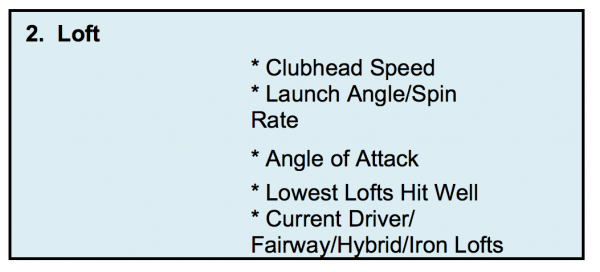
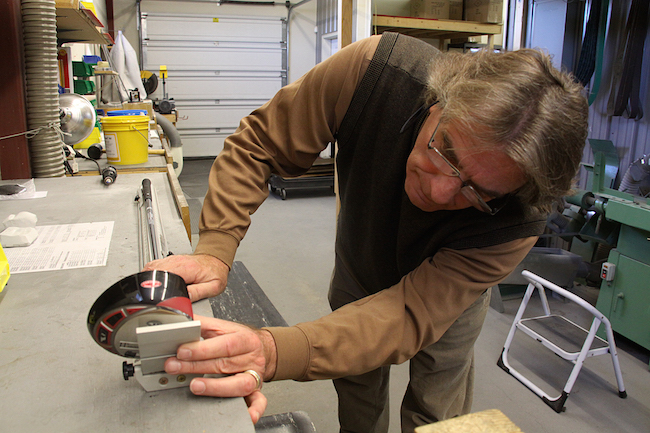



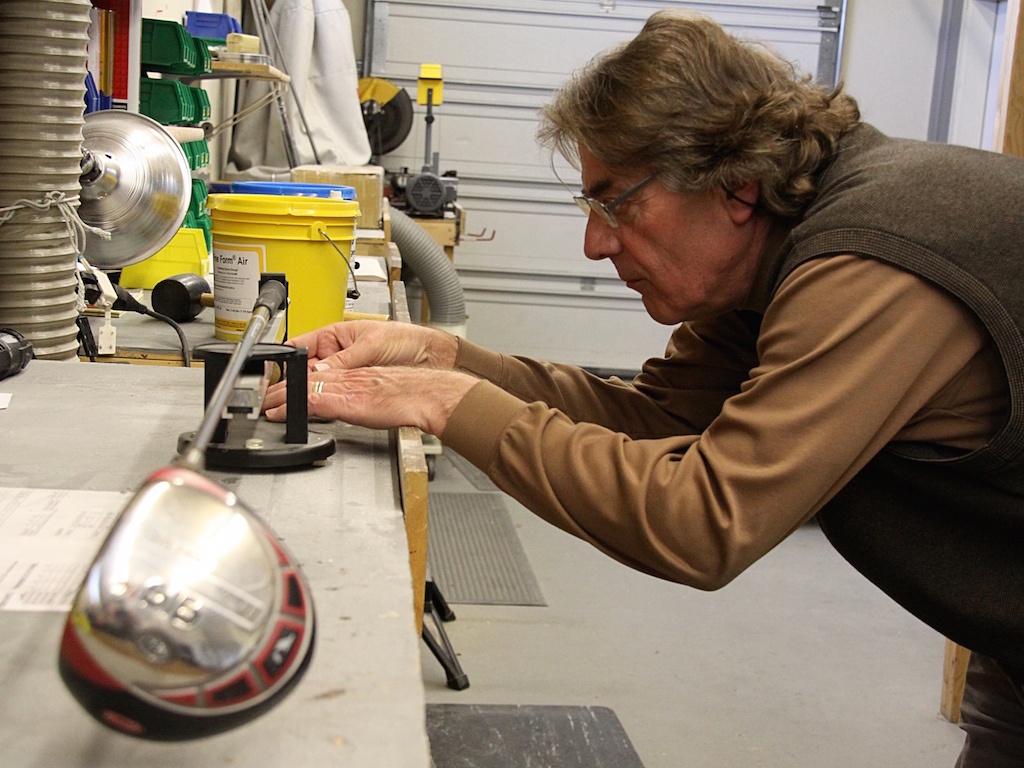

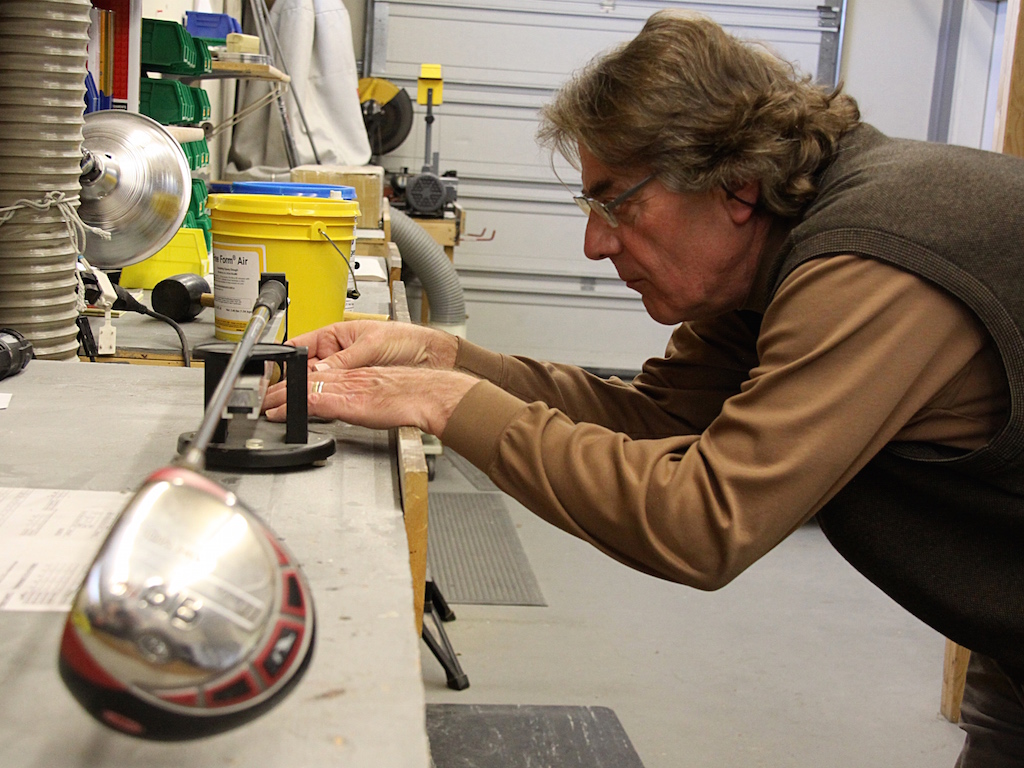
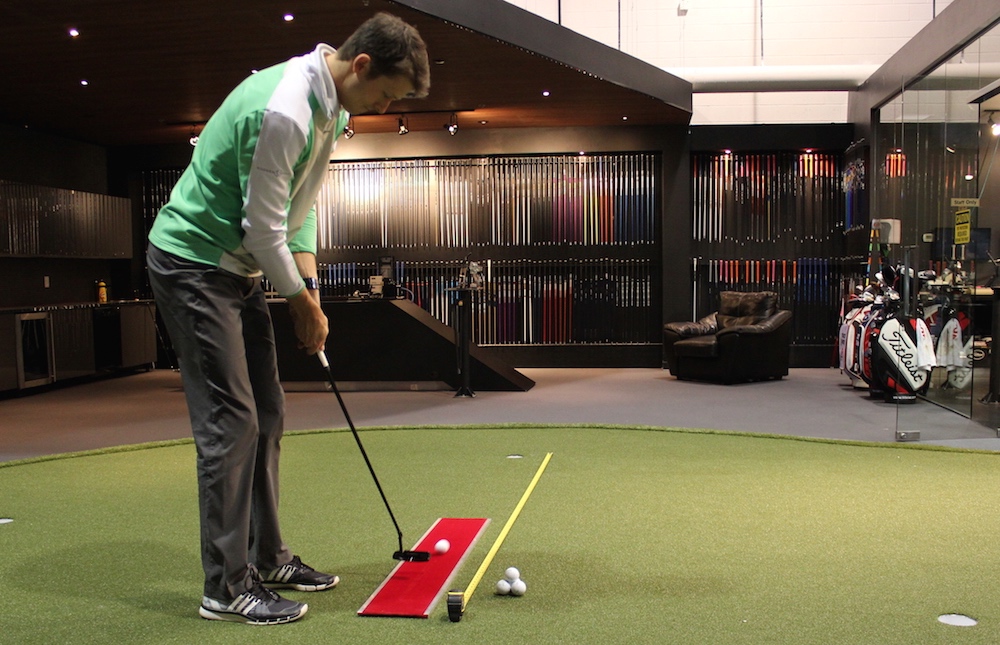
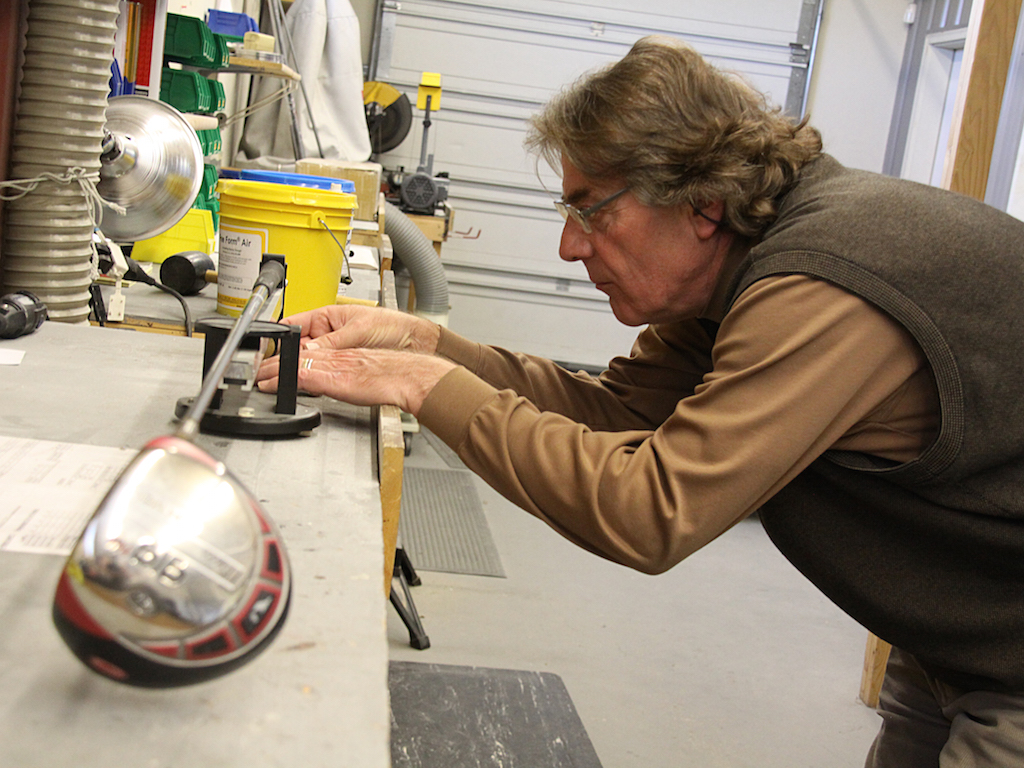












John
Jul 4, 2017 at 11:31 am
Tom, i think your sort of wrong with your slowing down part of the arms and the speed of the club head? what actually is happening is central-fugal force. if you (agree) keep the angle between writs and club head to late. the weight of the club head increases (G Force) as its released. actually if there is no tension in the hands you should not be forcefully releasing the club? this should happen naturally. again due to swing plain and G force (the whip effect) as the club head move toward the ball the length of the arc is increasing and there for gravity take over and the actually speed of the head slows the hands down as the club and arm angle increases. more golfers do not understand this effect as there body / arms are to busy fighting to try to get or keep the club on plain… the out to in wing path is a result of allowing the hand to actually swing down on the incorrect path (out of control) allowing central fugal force to throw the hand away from the body. But the brain work much after than the eye and somehow with good eye and hand coordination the club get to the ball in a slight out to in path. the club head could be actually square but pulling across the ball that causing the slice. fundamentally to belief? the draw is actually an open club face delivers from the inside going out (not a closed club face) it may be closing but not actually closed at impact
Kourt
Nov 21, 2015 at 2:10 pm
Hi Tom I was wondering if you’ve ever seen a benefit in a high swing speed player to having only 3 degree loft gap in the higher lofted irons? Say for example switching from 48, 52,56,60 to 48,51,54,57,60.
I currently have 4 degree gap covering 24-60 in irons. I feel like having more options inside 160 yards (which is where I find im hitting the majority of my approach shots on almost all courses I play) would be more effective then having another long iron or hybrid in the bag.
I have about 15 yard gap between wedges currently and only about a 10yard gap in the longer irons.
Since the majority of scoring opportunities come from inside 160 yards for me, and outside 200 yards even on my best swings its rare to be inside 15 ft, do you think decreasing the gap to 3 degrees would shrink the yardage gaps or is it too small of a change to even notice much improvement?
Justin
Jan 15, 2015 at 9:55 am
Do you feel that club length has any impact on swing path and not vice versa? (i.e. longer club lengths promoting a more in to out path whether due to swing weight, feel, etc…?)
Tom Wishon
Jan 15, 2015 at 7:23 pm
Justin
Absolutely the length of the driver has an extremely important relationship to the swing path and to the release. From our extensive work in this area, the longer the length of the driver, the more tendency there is to release the club earlier AND to swing over the top and more outside in. Of course, the more athletically inclined the golfer, the more the golfer can “fight off” these effects to still retain his path and release. But no question for the average to less skilled player, longer driver lengths really make it difficult for them to ever learn how to swing with an inside out to square path and to be able to hold the release longer on the downswing.
The reason this happens is because the longer the driver length, the higher the MOI of the fully assembled driver (not talking MOI of the head here, talking MOI of the whole club). And the higher the MOI of the full driver, the more load it puts on the golfer and the weak parts of his swing. hence with avg to less skilled players, the longer length in essence “attacks” their weak points which typically are their path and release.
Ken
Jan 14, 2015 at 11:48 am
I’m a low-launch low-swing-speed senior, and I sort of agree with you. But I think the confusion comes from the fact that Tom appears to be talking about trying to get high-launch, high-spin players to come down by giving them a stiffer shaft with a high bend.
In your case, I’ll bet that the low-bend shafts are also softer than the high bend ones, and that combination should help bring the ball flight up.
There’s also the fact that going the direction you did often gives players like us a much better feel for the action of the shaft, allowing us to better time the release, which improves the ball flight.
K
Eugene Marchetti
Jan 14, 2015 at 11:29 am
Your articles are always full of very useful information. Do you ever reccomend matching your set to the course you play the most. I played 73 rounds last year with 62 on the same course built in 1927 of only 6100 yards. Extremely small greens and tree lined fairways put the emphasis on accuracy not distance. There are five holes were a driver and even a three wood gets you in trouble and our two par fives are really long par fours. Therefore I don’t carry a three wood but hit a 16 degree four wood as my first wood, after my driver. Also, i found my 3 hybrid 18 degrees goes too far on a couple of holes which land in a hazard or sand trap so my set, after the woods, starts with a 21 degree four wood. I think matching your set to the course is extremely important. Again, thanks for your informative articles.
myron miller
Jan 14, 2015 at 10:41 am
I like the article overall and got some good information out of it. One point I’m confused about. You said the shaft can change launch angle only slightly and then only for later-releases. My confusion comes about in my own personal experience. Being a tad on the old side, my distance has obviously decreased significantly. In the typical golfer desire for more distance, I’ve tried a lot of different shafts in my driver. What was really interesting is that those with the bend point near the tip produced significantly higher launch angles than those with the bend towards the grip with mid-average bend shafts still being lower than the low bend shafts.
And by significantly different, I’m talking launch angles running from 6-8 degrees on high bend to 13-17 degrees for the tip flexible, with the obvious reductions in distance from the lower launch angle. To the best of my knowledge and the fitters I worked with, nothing on my swing changed, just the shaft bend profile. We tried to keep the same overall flex as much as possible.
And of course, I realize that this is a specific case and not generally true, but?
Do you understand my confusion and help explain what I am not understanding here?
Tom Wishon
Jan 15, 2015 at 11:06 am
If the shafts with a softer tip section bend profile did bring about a higher flight, then you must have a later to late-ish release to allow this effect to happen. Let me explain how this works so it can be a little more clear.
As we start the downswing, as long as we keep the wrist hinge angle between the arms and the shaft, the club and the arms are both moving at the same speed. Once we start to unhinge that angle, the arms begin to slow down while the club begins to accelerate. This happens because upon the start of the release, the energy in the arms is being sent to the club. So with the arms giving up their energy to the club, they have to start slowing down, while the club with its increased energy from the arms begins to speed up.
With the arms slowing down and the club speeding up, the accelerating clubhead now starts to push forward against the slowed arms. Because @2/3’s of the mass of the club is in the head, the head now starts to push the shaft into a forward bend shape. And as the shaft bends forward, the loft on the head increases dynamically. So if you have a more flexible shaft or more flexible tip section in the shaft, the amount of forward bend is greater, which means the dynamic loft increase is greater too. And that’s what causes the higher flight from the softer shaft.
BUT. . . this all depends on how much the shaft is still in its forward bending position when the clubhead gets to the ball. If the release of the wrist hinge angle is early in the downswing, the forward bend of the shaft happens well before the head gets to the ball. As such the shaft then can have time to bend forward from the effect of the release, but because the early release causes this too soon in the downswing, the shaft can bend back to straight by the time of impact, which means the shaft’s stiffness design can’t have any effect on the height of the shot.
This is all a PROGRESSIVE ACTION. Meaning, the very latest release causes the shaft to bend forward the most, a sort of late release causes the shaft to be bent forward but not as much as with the very late release, a midway release causes the shaft to be bent forward a tiny bit but not as much with the later or very late release. But then the early to early/midway release causes the forward bending too soon so the shaft can rebound back to have no effect on trajectory. So this is all progressive in its effect on shot height as the release becomes a little later and a little later and a little later.
Hence for you to see a height change from the softer tip shaft, you do have to have somewhat of a late-ish release but definitely not an early release. Hope this helps.